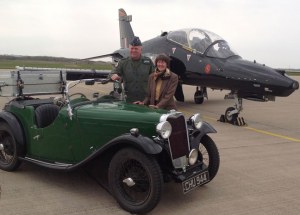Canada was the go-to place to get your training as an airman in the Second World War.
“In December 1939 an agreement was signed by the UK, Canada, Australia and New Zealand to form the British Commonwealth Air Training Plan, answering to a desperate need to match the production of warplanes with trained airmen to fly them. In Britain this was not to be achieved by using the operational aerodromes under pressure at home. A similar agreement was set up with South Africa.
“Canada was the primary location. It was not too far from the theatres of war, but provided dedicated aerodromes, ideal weather conditions, wide open spaces for flying unhampered by enemy action, and readily available resources such as fuel and industrial facilities in both Canada and nearby America for production and maintenance of aircraft. For Canada, this was seen as their major contribution to the war, and it was a huge operation, involving 94 schools in over 200 sites across Canada, nearly 11,000 aircraft and over 100,000 ground organisation personnel. Many Canadian young men also joined up to the RCAF and 55% of BCATP graduates were Canadian. Overall the BCATP trained almost half of all Allied servicemen in the various air forces, constituting a significant factor in establishing the Allies’ air supremacy in the conflict.
“Bryan Wild was one of over 130,000 air crew to graduate through the system in Canada.”
From
‘Flying Blind: The Story of a Second World War Night Fighter Pilot’ :
by Flt Lt Bryan Wild and Elizabeth Halls
Introduction to Chapter 3: “Wings Over Moose Jaw”
Header photo shows Untrained Pilots Tommy Hunter, Bryan Wild and Jimmy Ward enjoying the cold weather at Moose Jaw, Canada, 1940, courtesy of the British Commonwealth Air Training Plan.






